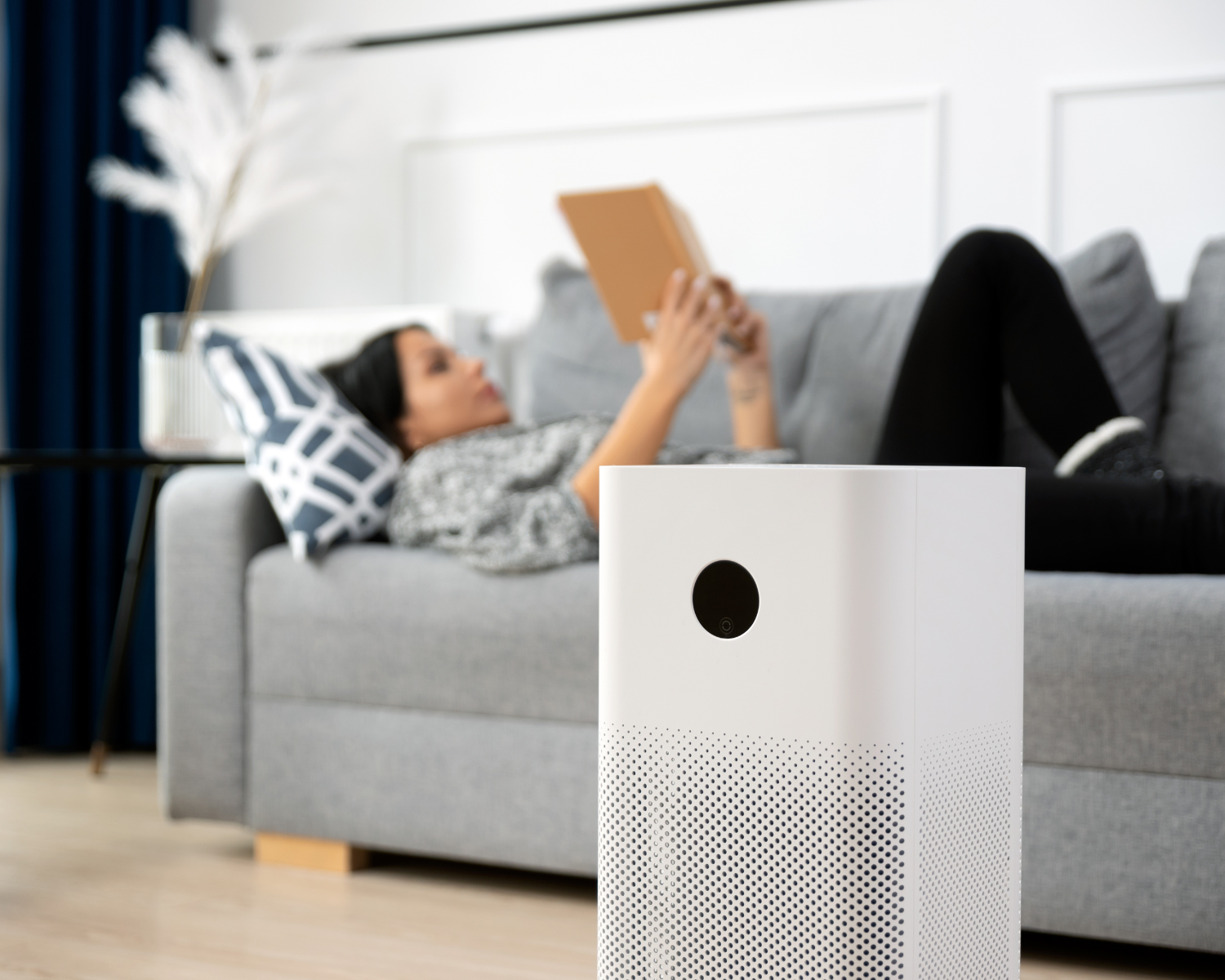Awareness before action: A case for getting your hands on the best air quality monitoring system
Clean air is one of our most fundamental requirements to live healthy lives. Unfortunately, in today’s world, it isn’t so easy to come by.
Air pollution is one of the greatest environmental threats to human health. Exposure to both outdoor and indoor pollution is responsible for the development of a wide range of health issues, even leading to premature mortality. In the UK alone, air pollution has been associated with about 40,000 early deaths and billions of pounds of annual expenditure on health and care services.
While it’s relatively easy to educate ourselves about the larger implications of poor air on our health, it’s much harder to know when and how to act. This is why it is very important to monitor and measure our air quality; it marks the first step towards improving it.
Moving indoors: Measuring IAQ
While awareness and action concerning air pollution have increased substantially in recent years, much of that attention has been focused on outdoor air, polluted by vehicular emissions, industrial activity, or natural events like forest fires. However, research has shown that indoor air levels of some air pollutants are often higher than outdoor levels. Particulate matter (PM), non-methane volatile organic compounds (NMVOCs), sulphur dioxide (SO2), and carbon dioxide (CO2) are only some of the pollutants that persist in domestic environments.
Pollutants affecting indoor air quality (IAQ) are emitted by construction materials, indoor equipment, paints, cleaning products, activities like fuel combustion for cooking or heating, and more. A study has revealed that fragrant chemicals called monoterpenes, found in scented surface cleaners, react with ozone to produce pollution particles called secondary organic aerosols (SOAs), which are also generated by vehicle fumes. Exposure to such cleaners could be equivalent to inhaling the same amount of pollutant particles you would on a busy urban road used by 28,000 vehicles daily. Researchers suggest that such tiny particles could potentially cause respiratory distress and possibly also enter the bloodstream.
A National Institutes of Health (NIH) study has also found that women who used hair relaxer products multiple times a year were at more than twice the risk of developing uterine cancer; allegations relating to such products have even resulted in lawsuits against subsidiaries of L’Oreal and Dabur in the USA and Canada. Additionally, the US FDA has proposed banning certain hair straightening products containing formaldehyde and formaldehyde-releasing chemicals like methylene glycol, inhaling which has been linked to cough, wheezing, or chest pain, and chronic problems such as frequent headaches, asthma, and the risk of developing endometrial cancer in the long term.
All this is to say that your indoor air is almost certainly more hazardous to your health than you imagine. There are interventions to ameliorate IAQ, for instance, fans containing ozone-capturing filters can reduce SOA levels indoors. But before you can action any such targeted interventions, you need an effective air quality monitoring device that gives you a full range of data about the nature and levels of different air pollutants in your indoor environment, be it your home, office, university, or any other enclosed space.
Why you need the very best air quality monitoring system
Air quality monitoring devices are designed to record pollutant levels (VOCs, PM2.5, PM10, CO2, etc.) and other air quality parameters like humidity. The best indoor air quality monitor will paint a detailed, insightful picture of the usually largely invisible atmosphere you live and breathe in. And there are a few key reasons why such information is crucial for you to know.
- Both indoors and outdoors, polluted air can have immediate as well as sustained effects on human health. Measuring indoor air quality (IAQ) using the best air quality monitoring system you can access is the first step towards building awareness of the potential impacts of indoor air pollution on you, your family, your employees, and your community.
- Indoor air pollution doesn’t look the same everywhere and at all times. Certain products and activities may lead to higher levels of PM2.5 and PM1, while others may emit VOCs or carbon monoxide. Each of these pollutants also has different effects on people’s health. For instance, ultrafine particles have been found to have detrimental cognitive effects, excess carbon dioxide can cause drowsiness, and VOCs can cause headaches, nausea, and loss of coordination. Therefore, it is important to differentiate between these pollutants and accurately profile the nature of air pollutants in your environment.
- Finally, measurement is the first step towards improvement. The best air quality monitoring system will provide timely and appropriate information which can help users take action to minimise exposure, reduce pollutant levels, and safeguard their health and the health of those around them.
Identifying the best indoor air quality monitor
When investing in an indoor air quality monitoring device, these are the features you should look out for:
- Types and number of sensors
Holistically measuring IAQ involves monitoring levels of a range of common household pollutants and environmental conditions like PM, CO2, VOCs, formaldehyde, humidity, and temperature. Most indoor air quality monitoring devices will have PM2.5 sensors. For other IAQ parameters, you will have to make appropriate decisions. If you’re interested primarily in PM pollution, look out for monitors with a combination of PM1, PM2.5 and PM10 sensors. Invest in a monitor with sensors for the maximum number of air quality parameters to get as accurate a picture as possible of IAQ. As a starting point, measuring VOCs, PM, carbon monoxide, and CO2 levels is most important for indoor environments. - Accuracy
This goes without saying, but the best indoor air quality monitor will give you the highest possible level of accuracy, ensured by the use of extremely sensitive sensors and high data acquisition. Determining the accuracy of an air quality monitoring system isn’t the easiest task; it involves comprehensive research, which may involve digging up accuracy test data from third-party testing, official specifications, reviews from unaffiliated websites or forums, or the spec sheets of individual sensor components used to build the air quality monitoring device you are assessing.
Generally, you should expect a minimum accuracy within the following brackets: ± 10-20% for PM levels; ± 25% for tVOC (total volatile organic compounds), ±5% for CO2, ± 3% for relative humidity, and ± 1 mBar for air pressure. - Continuous and real-time air quality monitoring
Some air quality monitoring devices and services will provide a snapshot of IAQ for a specified period of time as a discrete event. However, with changes in indoor activities like, say, cooking or cleaning, the levels of certain pollutants can fluctuate drastically in very short periods of time. Acute exposure to pollutants from such changes can have hazardous health effects. Investing in an air quality monitoring device that monitors your IAQ continuously and provides real-time updates can empower you to take immediate action should emergency situations arise. Continuous and real-time monitoring also provides more nuanced insights into air quality fluctuation patterns over time. - Connectivity and data management
Both real-time and historical IAQ measurements are important to arrive at accurate assessments of air quality over time. This means that ideal air quality monitors will have some form of connectivity, be it Bluetooth, WiFi, or some other integrated mechanism to transfer, access and review data reports. Further, it isn’t uncommon to lose connectivity temporarily, so it would be best to have a device that can retain at least some data. - Human-centred design
An air quality monitoring device designed to keep its users in mind is underrated. A human-centred monitor keeps in mind features like display (like touch screen displays), portability (when needed), and most importantly, the provision of actionable feedback, sometimes using tools to provide alerts or notifications. Constantly checking the device display is not a feasible way to be aware of potentially dangerous IAQ situations. Indicators like beeps, flashing lights, or phone notifications can help alert users and empower them to take their health into their own hands in critical situations. This is especially critical for monitors designed to monitor carbon monoxide levels. - Sensor calibration
With consistent use over a period of time, sensors tend to lose accuracy. The traditional solution to this inevitable problem is sensor calibration. While some companies sell monitors with auto-calibration features, these aren’t reliable solutions as they are often detrimental to system performance. While you could go for manual calibration, this method has its fair share of logistical concerns. The best solution for degrading sensor quality is to remove and replace them. Air quality monitoring systems like Kaiterra’s offer just this functionality with cassette-based sensors, making sensor calibration a breeze.
At the end of the day, finding the best air quality monitoring system is no piece of cake. But with this buyer’s guide, you can make an informed decision to safeguard your health and the health of those around you. Because only when you monitor and measure your indoor environment can you improve it.




Leave a Reply